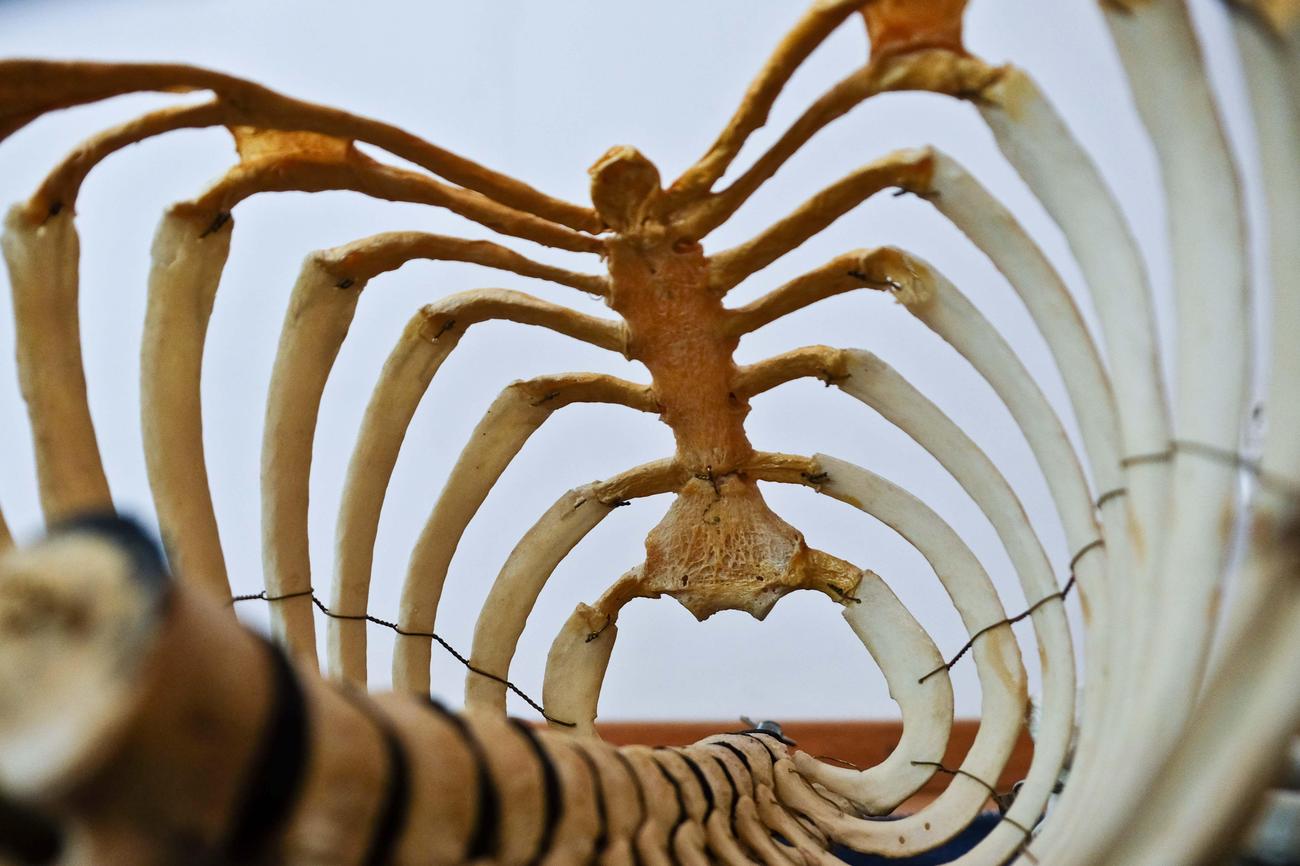If you’ve ever wondered about the hidden wonders of the human body, then prepare to be amazed. Today, we venture into the realm of the lumbar spine – a vital component of our skeletal structure that often goes unnoticed. But fear not, for we’re about to embark on an adventure filled with fascinating fun facts about the lumbar spine. Get ready to delve into the intricate world of anatomy and explore the significance of this incredible part of our bodies. From its importance in everyday activities to its resilience and adaptability, we’ll uncover the awe-inspiring wonders of the lumbar spine that will leave you marveling at the brilliance of human creation. So, tighten your seatbelt and prepare for a journey like no other!

Fun Facts About The Lumbar Spine
The lumbar spine, also known as the lower back, is a crucial part of the human body that plays a significant role in our daily lives. From providing strength for standing and walking to allowing us to turn, twist, and bend, the lumbar spine is a remarkable structure with some fascinating facts you may not know. So, let’s dive into these fun facts and discover more about the lumbar spine!
1. Lumbar Vertebrae and Weight Bearing: Did you know that the lumbar vertebrae have the largest vertebral bodies in the entire vertebral column? This unique feature allows them to bear the weight of our upper body and facilitate activities like standing, walking, and lifting.
2. Strength and Stability: The pedicles and laminae of the lumbar vertebrae are remarkably thick and strong, providing much-needed stability to the lower back. Additionally, the short and sturdy spinous processes of the lumbar vertebrae serve as attachment sites for strong lumbar muscles, contributing to the overall strength of this region.
3. Protection and Motion: Acting as a protective shield for the spinal cord, the lumbar spine surrounds and guards this vital nerve bundle. At the same time, it also allows for a wide range of body motions. Whether you’re bending to tie your shoelaces or twisting to look over your shoulder, it’s the lumbar spine that enables these movements.
4. Weight and Posture: Ever wondered how much weight your lumbar spine carries? Well, it actually varies depending on your posture. When you’re lying flat on your back with your knees elevated, the weight on your lumbar spine is around 25 lbs. However, when you’re sitting hunched over a desk or standing with a forward-leaning posture, the weight can increase to a whopping 200 lbs. It’s crucial to maintain good posture to minimize stress on the lumbar spine.
5. Connection to the Pelvis: The lumbar spine connects to the pelvis, forming a vital junction between the upper and lower body. As a result, it bears most of the body’s weight and withstands the stress of lifting and carrying items. Taking care of your lumbar spine is essential for maintaining overall spinal health and preventing conditions like lower back pain, arthritis, degenerative bone and disk disease, and stenosis.
6. Interesting Comparisons: Humans share some fascinating similarities and unique features when it comes to the lumbar spine. For instance, humans and giraffes have the same number of cervical vertebrae in their necks. Furthermore, humans are born with 33 vertebrae, but as we age, some of these vertebrae fuse together. Additionally, humans are taller in the morning and in space due to the decompression of intervertebral discs.
7. Spine and Daily Life: The lumbar spine’s impact on our overall health goes beyond just movement and posture. Poor spinal posture can lead to constipation and bladder pressure, emphasizing the importance of maintaining a healthy alignment. Furthermore, certain lifestyle factors, such as smoking, can affect the spine and increase back pain. Taking care of your lumbar spine through regular exercise, good posture, and healthy habits can contribute to your overall well-being.
8. The Amazing Spine: The lumbar spine is an intricate network of ligaments, joints, and muscles. In fact, the lumbar spine consists of 220 ligaments, 100 joints, 120 muscles, and over 120 attached muscles. Together, they create a flexible and dynamic structure that allows for almost all types of movement. It’s a true marvel of human anatomy!
9. Fascinating Flexibility: Have you ever wondered just how flexible the spine can be? When separated from the body, the lumbar spine can actually form 2/3 of a complete circle. This illustrates the incredible flexibility and adaptability of this region.
In conclusion, the lumbar spine is a remarkable part of the human body that deserves our attention and care. Understanding these fun facts helps us appreciate its significance in our everyday lives. From its role in weight bearing and stability to its protection of the spinal cord and contribution to body movements, the lumbar spine is indeed a fascinating structure. So next time you stand tall, remember to thank your lumbar spine for all it does!
“The lumbar spine: a remarkable foundation that bears the weight of our world.”
The spine is an incredible part of the human body, and there are so many fun facts about it that you may not know! Did you know that the spine is made up of 33 individual bones called vertebrae? Each vertebra is separated by cartilage, which acts as a cushion between the bones. If you’re interested in learning more fascinating tidbits about the spine, click here for some fun facts about the spine.
Fun Facts About The Lumbar Spine
Did you know that the lumbar spine holds some fascinating secrets? Dive into the intriguing world of the lumbar spine with us and discover intriguing lumbar spine truths. Explore the wonders of this complex structure and unravel the mysteries it holds. Immerse yourself in the captivating lumbar spine facts that will leave you amazed. Are you ready to delve into the depths of the lumbar spine? Click here to uncover the intriguing lumbar spine truths: Intriguing Lumbar Spine Truths.
As you dive deeper into the captivating world of the lumbar spine, we have some fascinating lumbar spine trivia that will pique your curiosity. Uncover hidden gems of knowledge and let the lumbar spine unveil its stories to you. Immerse yourself in the fascinating lumbar spine trivia that will leave you amazed. Are you ready to embark on this journey? Click here to explore the fascinating lumbar spine trivia: Fascinating Lumbar Spine Trivia.
Curiosity knows no bounds, and neither does our quest to provide you with captivating information. Get ready to uncover captivating lumbar spine facts that will make you see this structure in a whole new light. Delve into the depths of knowledge and discover the captivating lumbar spine facts that await you. Are you ready to be captivated? Click here to unravel captivating lumbar spine facts: Captivating Lumbar Spine Facts.
The lumbar spine is a treasure trove of wonders waiting to be explored. So why wait? Engage in this enthralling journey and embrace the mysteries of the lumbar spine. Unveil its truths, trivia, and facts, and let yourself be captivated. Begin your adventure into the captivating world of the lumbar spine today.
How to Easily Remember the Anatomy of the Vertebral Column
[youtube v=”LLPozWiYmyk”]
The vertebral column, also known as the spine, plays a vital role in supporting our body and protecting the spinal cord. Understanding its anatomy can be a challenge, but fear not! With a simple mnemonic, you can remember the number of vertebrae in under a minute. So, let’s dive into this easy and effective technique.
Remembering the Number of Vertebrae
To easily remember the number of vertebrae in each section of the vertebral column, use the phrase “breakfast, lunch, and dinner.” Let’s break it down:
Cervical Vertebrae: There are seven cervical vertebrae labeled C1 through C7. To remember this, associate it with “breakfast at 7 am.” This catchy phrase helps you recall the number of cervical vertebrae effortlessly.
Thoracic Vertebrae: We have a total of twelve thoracic vertebrae labeled T1 through T12. To remember these, think of “lunch at 12 pm or noon.” This association makes it easier to remember the number of thoracic vertebrae quickly.
Lumbar Vertebrae: There are five lumbar vertebrae labeled L1 through L5. To remember this, connect it with “dinner at 5 pm.” This simple trick helps you retain the number of lumbar vertebrae without any difficulty.
By utilizing the phrase “breakfast at 7 am, lunch at 12 pm, and dinner at 5 pm,” you can effortlessly remember the number of vertebrae in the cervical, thoracic, and lumbar regions of the vertebral column.
“By associating meals with the number of vertebrae, the anatomy of the vertebral column becomes much easier to remember.”
The Importance of the Lumbar Spine
Among the different sections of the vertebral column, the lumbar spine holds a special place. It is located in the lower back and is responsible for bearing the weight of the upper body. Here are some key points about the lumbar spine:
- The lumbar vertebrae have the largest vertebral bodies in the entire vertebral column, providing significant support and stability.
- The pedicles and laminae of the lumbar vertebrae are thick and strong, ensuring the lower back’s stability and protecting the spinal cord.
- The lumbar spine allows for a wide range of body motions and ensures flexibility and mobility.
- Weight distribution on the lumbar spine varies based on posture, with higher weights exerted when sitting or standing with poor posture.
- The lumbar spine connects to the pelvis and plays a crucial role in overall spinal health.
- Humans share interesting similarities and features with other animals in terms of the lumbar spine, highlighting its significance in our evolutionary development.
Additionally, it is important to note that poor spinal posture can lead to various issues such as constipation and bladder pressure. Lifestyle factors, such as a sedentary lifestyle or improper lifting techniques, can also contribute to increased back pain. Therefore, maintaining a healthy lumbar spine is essential for overall well-being.
“The lumbar spine, with its strong structure and pivotal role, ensures the stability, mobility, and overall health of the vertebral column.”
The Intricate Network of the Lumbar Spine
The lumbar spine is not just composed of bones; it is an intricate network of ligaments, joints, and muscles, working together to enable various movements. This complexity allows for a wide range of actions and body positions. Here are some key aspects of the lumbar spine’s anatomy:
- Ligaments: These tough bands of connective tissue provide stability and support to the lumbar spine. They help in holding the vertebrae together and in place.
- Joints: The lumbar spine contains facet joints that facilitate movement and flexibility. These joints enable smooth articulation between the vertebrae.
- Muscles: A network of muscles surrounds the lumbar spine, allowing for controlled movements. The muscles work in harmony to ensure proper posture and body mechanics.
The lumbar spine’s flexibility is truly remarkable, as it can form 2/3 of a complete circle when separated from the body. This exceptional mobility highlights the importance of taking care of our lumbar spine for optimal functionality.
“The lumbar spine’s intricate network of ligaments, joints, and muscles enables a wide range of movements, emphasizing its significance in our daily activities.”
In conclusion, understanding the anatomy of the vertebral column, particularly the lumbar spine, is crucial for maintaining a healthy and pain-free back. By using the clever mnemonic of “breakfast, lunch, and dinner,” you can remember the number of vertebrae in each section effortlessly. Remember, a healthy spine leads to a healthier life.
For a more comprehensive study guide on the anatomy of the vertebrae, including visual aids and additional information, check out the full video linked in the bio. Don’t forget to like, subscribe, and share this valuable knowledge with others!
Note: The content provided above is based on the YouTube video transcript and is presented in a simplified and relatable manner to aid in understanding the anatomy of the vertebral column.

FAQ
Question 1: How many vertebrae are in the lumbar spine?
Answer 1: The lumbar spine consists of five vertebrae in the lower back.
Question 2: What is the function of the lumbar spine?
Answer 2: The lumbar spine allows the body to turn, twist, and bend, and provides strength for standing, walking, and lifting.
Question 3: Where is the lumbar spine located?
Answer 3: The lumbar spine is located in the lower half of the vertebral column, between the thoracic vertebrae/rib cage and the pelvis/sacrum.
Question 4: What conditions can affect the lumbar spine?
Answer 4: Conditions that can affect the lumbar spine include lower back pain, arthritis, degenerative bone and disk disease, and stenosis.
Question 5: How many ligaments, joints, and muscles are in the lumbar spine?
Answer 5: The lumbar spine consists of 220 ligaments, 100 joints, 120 muscles, and over 120 attached muscles.
- Winter Weather Advisory Issued for Several Rochester-Area Counties - November 17, 2024
- 1-800-GoFedEx: Your Complete Guide to Navigating FedEx Customer Service - November 17, 2024
- Prime Office Space at 191 North Wacker Drive, Chicago, IL 60606:Leasing Opportunities & Building Overview - November 17, 2024















